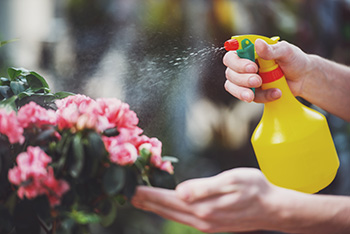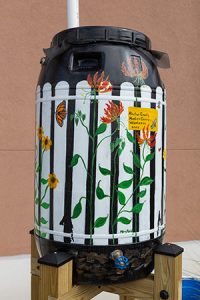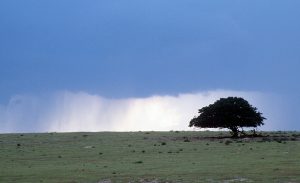Ten Ways to Save Water

Water is the lifeblood of all plants, including turfgrass. But many Florida homeowners aren’t aware that watering their lawns too much can be as damaging as not watering enough. These ten Florida-Friendly tips will help you save water in your landscape.
1. Choose the right plant for the right place
All plants must get the right amount of sun, water, and nutrients to thrive—even natives.
- Select plants suited for your area
- Place plants in the landscape where site conditions match their needs
- Group plants with similar water needs together
2. Water thoughtfully
A drop here and a drop there can add up to a lot of water.
- Always follow water restrictions
- Water early in the morning
- Irrigate plants and grass only when they start to wilt
3. Handwater when possible

Handwatering is usually allowed during water restrictions, because it uses less water than an automatic irrigation system.
- Use a watering can, pail, or hose with an automatic shutoff nozzle
- Handwater potted plants, shrubs, trees, vegetables, and flower beds, and new lawns
- See if your water management district (WMD) limits handwatering
4. Perform regular irrigation maintenance
An irrigation system is only as efficient as it’s maintained to be.
- Check for and repair leaks
- Unclog and replace broken heads
- Point heads at plants, not driveways and sidewalks
5. Calibrate irrigation system
Even an efficient irrigation system can waste water if it’s left on for too long. The ideal amount of water to apply is 1/2 to 3/4 inches. Figure out how long to run your system by doing a test:
- Place multiple coffee/tuna/other straight-sided cans throughout each irrigation zone
- Run your system for thirty minutes
- Average the depth of the water in all the containers
- Multiply running time as needed for 1/2 to 3/4 inches of water
6. Make a Rain Barrel

Rain barrels capture rainwater that flows off your roof for use in the landscape. They’re easy and inexpensive to make and can have a big impact on your water bill—instead of watering your plants with water you’re paying for, you’re using free water!
7. Use microirrigation
Drip or microspray irrigation systems apply water directly to the roots of plants, where it’s needed, and lose minimal water to evaporation or wind drift.
8. Mulch plants
Mulch helps keep moisture in the soil around your plants. Choose from many different kinds of mulch and apply 2 to 3 inches around trees, shrubs, flowers, and vegetables.
9. Mow correctly
How you mow your lawn can have a big impact on how much water it needs.
- Mow high; mowing your grass to the highest recommended length encourages a deep healthy root system
- Keep your mower blades sharp; dull cuts make grass more disease-prone
- Cut no more than one third of the leaf blade each time you mow
10. Be a weather watcher

Rain is irrigation, too. Use it to your advantage—it’s free!
- Don’t water your landscape if it’s rained in the past twenty-four hours
- If rain is forecast in the next forty-eight hours, hold off on irrigating
- Purchase a rain gauge to track how much rain your plants are getting
- Install a rain shut-off device to override your irrigation system when it’s raining
